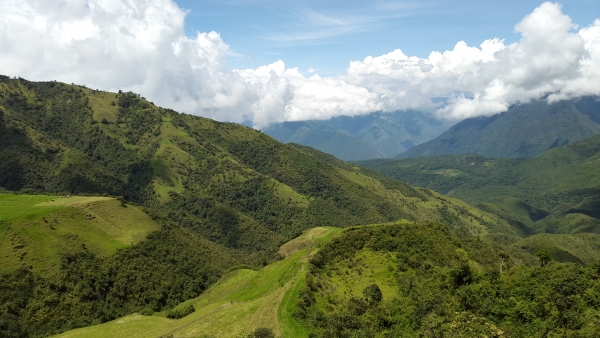Collaboration on Little Book a model for necessary partnerships to achieve global goals

In December at the Global Landscapes Forum in Paris, EcoAgriculture Partners, the Global Canopy Programme, the World Wide Fund for Nature, the Nature Conservancy, and IDH – the Sustainable Trade Initiative debuted The Little Sustainable Landscapes Book, which clarifies what integrated landscape management means, and provides an implementation roadmap. The book is available free online.
"To achieve the new international climate and development goals, we know we need to deploy integrated landscape management (ILM)."That is why it was such an amazing opportunity to co-author The Little Sustainable Landscapes Bookwith this group of venerable international partners.
The book explicitly highlights in detail how integrated landscape management can help communities, regions and states make significant progress in achieving their sustainable development and climate objectives. We’ve been working to develop and mainstream the principles and practice of ILM for more than a decade. That influential global organizations like these are willing to put their time, treasure and brands behind it at this critical moment is incredibly encouraging.
Shifting the approach of major institutionsDuring the launch of the Little Book in Paris, The Global Canopy Programme’s outgoing Executive Director Andrew Mitchell went so far as to say, “Given the critical need to stabilise greenhouse gas emissions, the implementation of integrated landscape management as part of a country’s’ Intended Nationally Determined Contributions (INDCs) submissions could deliver significant mitigation, as well as adaptation, benefits.”
I was especially inspired by the willingness of all parties to engage in vigorous, detailed debates about the subject matter, respecting and learning from one another. I know it strengthened the final product immensely. Beyond improving the book, the process strengthened ties between our organizations, and the commitment of each organization to the principles and practices outlined in the book. I am confident, in other words, that writing this book will not only improve the way its readers take on the challenges of climate change and sustainable development: it will change the way its author organizations do so.
Indeed, Marco Lambertini, Director General of WWF International, said on announcing the book’s publication: “Within a coherent national framework it is critical that we apply our planning at the jurisdictional and landscape level. This is the level where economy meets the environment. […] The implementation of a holistic, integrated land use planning at landscape level is today a main obstacle to success and is the approach that will help close the still-too-wide gap between commitments and real forest conservation.”
Case studies demonstrate collaboration in two waysThe author group also welcomed collaboration and input from a diverse set of additional institutions, helping us incorporate evidence from 25 excellent case studies and surveys of hundreds of pioneering integrated landscape initiatives. Integrated landscape management is working to improve outcomes in difficult land and resource management situations around the world. Discovering new cases and hearing from practitioners we did not know about yet was one of the joys of working with such an expansive team.
Finally, I am particularly excited by the continued collaboration of the Little Book team in 2016. Translations into Spanish, Bahasa Indonesia, Portuguese and French are in the works or on the horizon. Direct distribution of the book to key audiences around the world will continue at conferences and in presentations around the world, following its massive success at COP21 and the Global Landscapes Forum in Paris, where more than 3000 copies were distributed.
Partnerships key to writing book, achieving SDGsCritically, the book offers concise definitions of landscape and integrated landscape management – two terms that have entered the international institutional parlance so far without clear meaning. They were hard won in discussions among the authors, representing the various perspectives of their major institutions and our own combined 100+ years of experience with conservation and development. I’ve taken to reading them directly from the book when asked (and then handing over the copy of the book to the questioner). Finally, a widely available and definitive answer to that question!
The book’s recommendations focus on how to apply integrated landscape management to every landscape worldwide. Specifically, we offer five broad recommendations, with specific action steps under each:
- Adopt integrated landscape management as a key means to make progress towards the Sustainable Development Goals at national and subnational scales;
- Empower local stakeholders to design sustainable landscape solutions that meet their unique priorities and contexts;
- Develop landscape strategies that contribute to inclusive green economies;
- Leverage multiple sources of finance to achieve landscape goals;
- Build capacity and facilitate learning among key stakeholders for better outcomes in integrated landscape management.
The Little Sustainable Landscapes Book is a remarkable achievement of collaboration between conservation and agriculture organizations, demonstrating what is possible when experts are able to put aside egos, be intellectually open and honest, and willingly share credit. As the book makes clear, achieving the sustainable development and climate goals will require just this sort of of collaboration.

Facebook comments